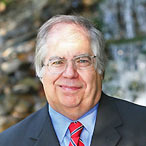Making Our Strong Possibilities Strong Realities

Robert Buhrman
The imagination and energy of the Cornell faculty are impressive. Because of the faculty’s peerless drive, Cornell is witnessing a broadening of its already rich, distinctive legacy in the physical sciences and engineering, and at the same time, an expanding preeminence in the life sciences and computational sciences. There is also growing strength in the social sciences and humanities. The university has made several key hires in these areas, enhancing our ability to forge new directions. We are particularly proud of our young faculty. Cornell received more career awards than any other university. We are number one in the National Science Foundation (NSF) Faculty Early Career Development Program awards and in NSF’s Presidential Early Career Award for Scientists and Engineers (PECASE). This is an excellent indicator of the strength of Cornell’s young faculty and the bright future ahead.
Cornell’s prominence in nanoscale science and technology and materials science prevails. Recently the university received a King Abdullah University of Science and Technology (KAUST) Global Partnership grant of $25 million ($5 million per year for five years) to focus on application and fundamental studies of organic and inorganic hybrid nanomaterials, originally discovered at Cornell, as new platforms for emerging energy technologies. This partnership with Saudi Arabia’s KAUST will strengthen our efforts in energy and sustainability. Cornell was competitive in NSF’s Integrative Graduate Education and Research Traineeship (IGERT) awards during the past year. Two centers, Cornell Center for Materials Research (CCMR) and Nanobiotechnology Center (NBTC), received multimillion-dollar awards for training researchers in new materials, nanotechnology, and interdisciplinary approaches. CCMR also increased its funding, and with NSF support formed educational partnerships with several minority-serving institutions, including the Tuskegee Institute and the University of Puerto Rico.
As the faculty looked for ways to make contributions to the nation’s search for alternative energy resources and practices, the Cornell Center for a Sustainable Future emerged. This new campuswide collaborative center has three areas of focus: energy, environment, and economic development. Stretching across many domains is another initiative to address the magnitude of data generated in today’s large-scale research programs, such as sky surveys from Arecibo Observatory or insect flight data from the Laboratory of Ornithology. These massive amounts of data need to be processed, stored, and curated so that many researchers can utilize the data. Researchers need to be able to find an interesting needle in the haystack—or employ a different method of looking for a particular needle in the haystack of data. Cornell’s Department of Astronomy and Mann Library, in partnership with our reorganized Center for Advanced Computing, are working to establish a Cornell effort called DISCOVER that will systematically tackle some of these data challenges and exciting opportunities.
Cornell and all research universities face some challenges of a national scope. Federal research funding has been flat for the past several years, and we now expect flat funding for at least another year. Federal regulations that govern research have been rapidly changing and intensifying, and we must ensure full compliance with them. A major goal of the Office of the Vice Provost for Research is to minimize as much as possible any negative impact of these regulations on Cornell researchers, to keep the highly entrepreneurial spirit of the Cornell faculty positive and strong.
Our mission is to help make our strong possibilities stronger, propelling them into actuality as we move the cutting edge of research forward.
Robert A. Buhrman
Senior Vice Provost for Research
An Applaudable Year
- CORNELL
- Received three PECASE and 12 Faculty Early Career Development awards
- Pushed forward with Energy Recovery Linac (ERL) technology and testing
- Developed an excellent academic model for the life sciences and enhanced the interaction between the life sciences and the physical sciences
- Maintained a preeminent position in nanoscale scienceand technology and materials science
- Continued to build strength in computational science
- Moved successfully forward on a number of exciting astronomy and space science initiatives and continued to pursue exciting and unique research at Arecibo Observatory
- Strengthened intercampus culture between the Ithaca and Weill Cornell Medical College campuses
- Has three new high-tech facilities in progress: Weill Hall for the life sciences, the new physical science building, and Gates Hall for computational science
- Transitioned the Cornell Theory Center into a new form and organization, the Center for Advanced Computing (CAC), to serve the high-performance computing needs of Cornell researchers in a sustainable manner that enables their success
